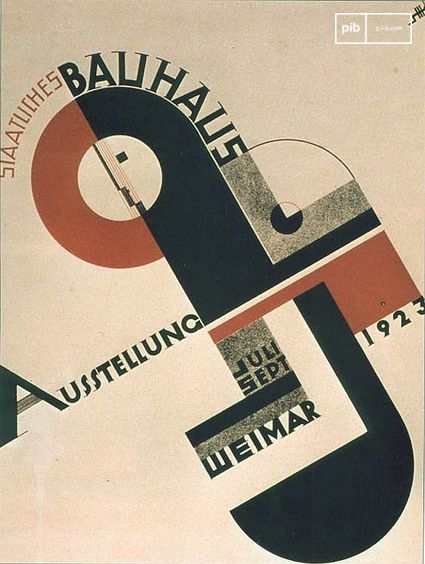assistant
Collection
Sylvae

BAUHAUS
Masterfully marketed, with a stellation of modernist artists and designers like Paul Klee, Wassily Kandinsky, Laszlo Moholy-Nagy, and Marcel Breuer who took the professor roles, the word Bauhaus sounded almost magical for those with an uncompromising dream of a modern, technology-advanced future. The Bauhaus was the beginning of art school as a new way of life.
An Opening to Modernism
DAS STAATLICHE BAUHAUS ('House of Construction' in German) or Bauhaus was founded by Walter Gropius and operated in Germany in less than 15 years from 1919 to 1933 yet it has been come to the most iconic symbol of modernism, creating a strong influence almost many areas of art, culture and society in the 20th century, especially in modern industrial product design, furniture design, architecture, painting, weaving and much more. In the artistic quest for the sense of forms, the beauty of colours, and their interpretation in modern, machine-induced life, Bauhaus did not stop at the end of the school's physical existence in Berlin but has been continuously studied and applied all over the world, in all the fields of arts.
It started as an initiative sponsored by the state to integrate the artist and the craftsman with an intention to bridging the gap between art and industry. The mission declared by the first founding members was to provide a new, affordable, plain and utilitarian design that can be universal, accessible to every kind of person and in every area.

Bauhaus Poster 1923

Bauhaus main building
“The ultimate goal of all visual artistic activity is construction.”
Walter Gropius
This was considered as a radical step from the Art Nouveau and Art Deco eras with heavily elaborated decorations into Modernism and modern life with its famous streamlined shapes, symmetrical forms void of excessive adornments. Importantly, it was one of the first Arts/Design schools to open its doors to women, even though limited - women were exclusively allowed in the weaving workshop.
Bauhaus took heavy influence from Constructivism (an artistic and architectural philosophy originating in Russia around 1919 - a rejection of the idea of self-directed art.) and advocate making art for the sake of the community, regarding art as a practice for social purposes. It was also viewed as the combination of the Arts and Crafts movement with a modern take.

Bauhaus art - Swinging by Wassily Kandinsky, 1925
In this universe

Bringing the spirit of the Bauhaus to your home requires a certain daring and creativity to give your living space a modern touch.
Bauhaus - The Beauty of Geometry - Styling board
BAUHAUS - 04-Aug-2021
Associated Products
School Evolution
Physical location periodically changed:
- 1919 to 1925: Weimar
- 1925 to 1932: Dessau
- 1932 to 1933: Berlin
By 1933, the school was closed by the decision of the management board under pressure from the Nazi regime for having the 'communist approach' in their operation and teaching methods. Together with this is the shifting in leadership:
- Walter Gropius from 1919 to 1928
- Hannes Meyer from 1928 to 1930
- Ludwig Mies van der Rohe from 1930 until 1933
This constant changing environment, both physically and methodologically, resulted in great transformations of focus, techniques, instructors and politics.
Bauhaus Designs
Bauhaus design is sometimes also called International Style, however, there is a difference between the two though they both shared very similar principles and goals having been introduced and practiced by the same people like Walter Gropius and Mies van der Rohe. The Bauhaus style can be regarded the precedence that led to the proliferation of the International Style after the second World War in North America and around the world. While it could be said that Bauhaus concentrated mostly on the design aspect, the International Style is almost always referred specifically as an architectural term.
Principles
The Bauhaus sought to combine art, craft, and technology to reach a common goal and a common vision of a purer form of design without unnecessary decoration. Its principles of design stood on three pillars: practicality, functionality, and cleanliness. The reigning goals were the unity of form and function, the idea that design is in service of the community, and a belief in the perfection and efficiency of geometry. Its core objective was a radical concept: to reimagine the material world to reflect the unity of all the arts. Different than most of the art/design schools, BAUHAUS considered design and production equally important: designs for mass production were simple, rational, and accessible to all people.
- Rule #1: Form follows function - Every element of the design had to have its function and practical usage.
- Rule #2: Visual importance of typography - Bauhaus professors soon realized the essential role of types in effective visual communication.
- Rule #3: Geometry - strict geometry and rectilinear forms are presiding to maximize the use of space and materials
- Rule #4: Colours - The study of colours at the Bauhaus was included in the official curriculum. They often returned to the most basic, monochrome colours with reds, yellows, and blues.



